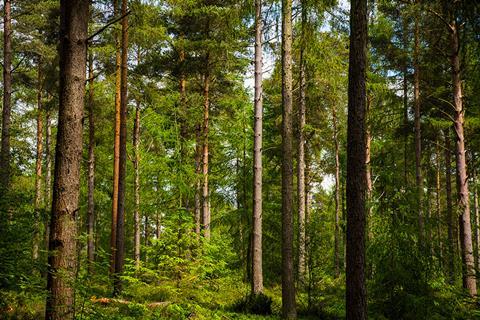Use of material a ŌĆÖkey partŌĆÖ of net zero strategy, says minister
The Department for Environment, Food and Rural Affairs (DEFRA) has published a roadmap to increase the use of timber in the construction of homes and buildings.
According to the department, using timber in construction is one of the best ways to reduce emissions from buildings, which account for around of 25% of the UKŌĆÖs greenhouse gas emissions.

However, 80% of timber currently used in the UK is imported, and the new roadmap sets out plans for driving up domestic capacity.
Forestry minister Rebecca Pow said promoting the use of timber as a building material was a ŌĆ£key partŌĆØ of the governmentŌĆÖs net zero strategy and would help create innovation and jobs.
She gave the example of parliamentŌĆÖs own Westminster Hall, which has the largest medieval timber roof in Northern Europe, as a ŌĆ£fantastic case in pointŌĆØ for the use of wood as a building material and said the roadmap signalled ŌĆ£the next evolutionŌĆØ in the UKŌĆÖs use of the material.
Key actions include improving data on timber and whole life carbon, promoting timber as a construction material and boosting skills, capacity and competency across the supply chain.
It also outlined its intention to address fire safety concerns relating to the use of engineered mass timber and to work on issues with insurers, lenders and warranty providers.
>> The new Black & White ║├╔½Ž╚╔·TV: a clear case for timber
>> Phoenix rising: Plans for the ŌĆślargest timber development in UKŌĆÖ take shape
Andrew Carpenter, chief executive of the Structural Timber Association, said: ŌĆ£We are delighted that the UK Government has recognised the critical need to safely increase the use of timber in construction and we applaud the leadership that has been shown in setting this objective.ŌĆØ
He said that the roadmap would be a ŌĆ£beneficial driverŌĆØ in the push towards net zero and would give ŌĆ£clarity and guidance to stakeholders throughout the construction industryŌĆØ.
ŌĆ£It has been a pleasure to participate in such important work and we look forward to continued collaboration between Government and industry as we move to the next stage of implementation,ŌĆØ Carpenter added.
The government says increasing domestic capacity will also create new green jobs in the UKŌĆÖs forestry and wood processing sectors, which currently contributed more than ┬Ż2bn to the economy.
ŌĆ£It will innovate the economy, play a role in creating green jobs and also help meet our tree-planting targets,ŌĆØ said Pow.
DEFRA has already awarded ┬Ż7.6m through the Woodlands into Management Forestry Innovation Funds to develop new technologies and working practices that boost homegrown timber.
There is also a statutory woodland cover target to increase tree canopy and woodland cover in England to 16.5% by 2050, which should stimulate tree planting of both hard and softwoods.
Elsewhere in government, use of the product has been advanced by the Department for EducationŌĆÖs Gen Zero project, which has created a prototype low-carbon classroom made from UK-sourced-and-manufactured timber products.



























No comments yet